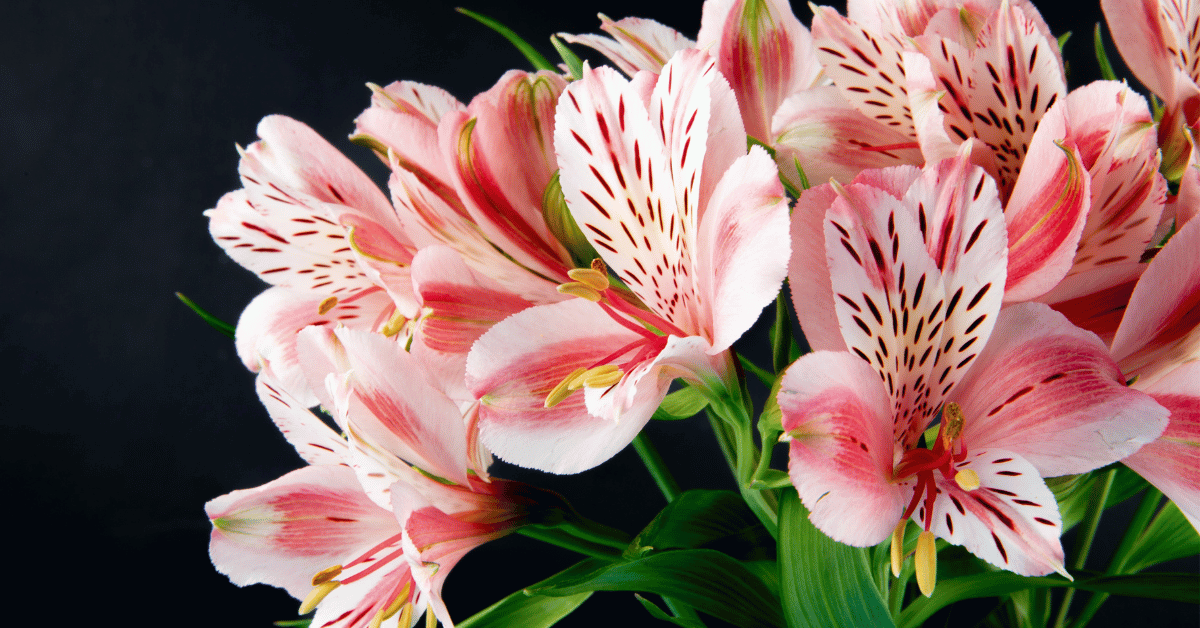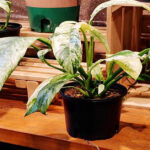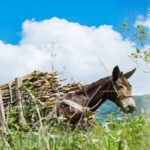Alstromeria, often called the Peruvian Lily or Lily of the Incas, is more than just a strikingly beautiful flower. For gardeners, florists, and flower enthusiasts, it holds a unique place thanks to its vibrant colors, long vase life, and deep cultural symbolism. Originating in South America, particularly Chile and Brazil, Alstroemeria has become a staple in floral arrangements worldwide. If you’re searching for comprehensive information about this remarkable bloom—its history, cultivation, varieties, and care—you’ve come to the right place. In the next sections, we’ll uncover not only how to grow and maintain Alstroemeria but also why it has captured the fascination of botanists and artists alike. Whether you’re planting it in your garden or arranging it in a bouquet, this guide will provide you with essential knowledge to ensure your flowers thrive. As the poet Ralph Waldo Emerson once said, “The earth laughs in flowers”—and few flowers express that joy as beautifully as Alstroemeria.
Origins and Historical Significance
Alstroemria was first documented in the 18th century by Swedish botanist Clas Alströmer, after whom the plant was named. Native to South America, it grew naturally in high-altitude regions of Chile and Brazil, thriving in cool yet sunny environments. The plant’s dual origin in both temperate and tropical regions gave rise to two primary growth types: winter-growing Chilean species and summer-growing Brazilian species. Indigenous cultures valued Alstroemeria not only for its beauty but also as a symbol of friendship and mutual support. During the Victorian era, when flower meanings flourished in social exchanges, Alstroemeria conveyed devotion and a bond between friends. Over time, it found its way into European botanical gardens and later into commercial cultivation. By the 20th century, hybridization expanded its color range, allowing today’s gardeners and florists to enjoy blooms in pink, orange, purple, red, yellow, and white—each shade carrying its own symbolic nuance.
Botanical Description and Growth Characteristics
Alstroemeria belongs to the family Alstroemeriaceae and typically grows from tuberous roots, which store nutrients for long blooming periods. The stems are slender yet strong, often reaching 2 to 4 feet in height. A notable feature is its resupinate leaves, which twist during growth so that the undersides face upward—a botanical curiosity rarely seen in other plants. Each stem can produce multiple blooms, making it ideal for cut-flower arrangements. Blooms are trumpet-shaped with distinct streaks or speckles, adding depth and complexity to their appearance. Flowering seasons vary depending on the variety, but most hybrid Alstroemeria bloom profusely from late spring through early autumn. While it is a perennial in many climates, in colder zones it can be grown as an annual or protected in greenhouses. Its adaptability and high ornamental value have made it a favorite among both professional florists and home gardeners.
Table 1: Alstromeria Color Meanings and Symbolism
| Color Variety | Symbolic Meaning | Common Use in Floral Arrangements |
|---|---|---|
| Pink | Affection, playfulness | Friendship bouquets, celebratory gifts |
| Yellow | Happiness, good fortune | Birthdays, congratulatory events |
| White | Purity, spiritual connection | Weddings, memorials |
| Orange | Energy, warmth | Autumn arrangements, seasonal décor |
| Red | Passion, deep love | Romantic gestures, anniversaries |
| Purple | Mystery, elegance | Formal events, luxury floral designs |
Cultivation Requirements
Growing Alstromeria successfully begins with understanding its environmental preferences. It thrives in full sun to partial shade, requiring at least six hours of direct light daily for optimal flowering. The soil should be well-drained yet fertile, enriched with organic matter such as compost. Alstroemeria dislikes overly wet conditions; excessive moisture can lead to root rot. Plant tubers in early spring after the danger of frost has passed, spacing them 12 to 18 inches apart to allow for healthy growth. Consistent watering is essential during active growth, but allow the soil to dry slightly between waterings. Mulching around the plants helps retain moisture while keeping weeds under control. In colder climates, gardeners often lift and store the tubers during winter or provide thick mulch protection. Fertilization with a balanced, slow-release formula encourages abundant blooms and strong stems.
Hybridization and Varietal Diversity
Over the past century, breeders have developed a wide range of Alstromeria hybrids, offering gardeners nearly endless choices in color, height, and bloom time. Modern hybrids combine the hardiness of Chilean types with the vibrant colors of Brazilian species, resulting in plants that are both durable and visually stunning. Some varieties are bred for extended vase life, making them popular with commercial florists. Others are compact, perfect for containers and small garden spaces. Notable cultivars include ‘Indian Summer’ with bronze foliage and bright orange blooms, ‘Inca Ice’ with pale apricot petals, and ‘Princess Lilies’—dwarf hybrids ideal for patio pots. Hybridization efforts continue to focus on disease resistance, climate adaptability, and new color patterns. As the horticultural saying goes, “In gardening, there is no end to improvement,” and Alstroemeria breeding perfectly embodies this philosophy.
Table 2: Popular Alstromeria Varieties
| Variety Name | Distinctive Features | Best Use |
|---|---|---|
| Indian Summer | Bronze foliage, orange flowers | Borders, autumn arrangements |
| Inca Ice | Pale apricot petals, cold hardy | Perennial beds, cut flowers |
| Princess Lilies | Compact growth, bright shades | Containers, balconies |
| Maui | Deep pink blooms with yellow throats | Summer bouquets |
| Atlantis | White petals with purple markings | Weddings, formal events |
Role in Floristry and Commercial Trade
Alstromeria is a florist’s dream flower. Its exceptional vase life—often lasting two weeks or more—makes it a dependable choice for bouquets and centerpieces. The wide color range allows for creative pairing with roses, lilies, chrysanthemums, and seasonal greens. Because its stems bear multiple blooms, it adds volume and structure without overwhelming other flowers. Commercially, Alstroemeria is cultivated extensively in countries like Colombia, Ecuador, and the Netherlands, where controlled greenhouse environments ensure year-round production. The flower is often transported via refrigerated cargo to maintain freshness during long-distance shipping. Its affordability compared to other premium blooms further enhances its popularity among both florists and consumers. As one florist aptly puts it, “If roses are the heart of a bouquet, Alstroemeria is the soul.”
Medicinal and Cultural Uses
Although primarily valued for ornamental purposes, Alstroemeria has found modest roles in traditional medicine within its native regions. Some indigenous groups brewed infusions from the tubers to relieve mild ailments, though such uses are now largely historical rather than medicinally verified. In modern culture, Alstroemeria is often used in symbolic gestures to celebrate enduring friendships. Its enduring nature—thriving in diverse climates and blooming over long periods—has made it a metaphor for resilience and lasting bonds. Artists and photographers frequently choose it as a subject because of its intricate petal markings. Beyond symbolism, its role in environmental beautification—whether in public parks, private gardens, or urban green spaces—demonstrates the flower’s contribution to human well-being.
Pest and Disease Management
While Alstromeria is generally hardy, it is not immune to pests and diseases. Common insect pests include aphids, thrips, and spider mites, which can damage leaves and flowers. Regular inspection and the use of insecticidal soap or neem oil help control infestations. Diseases such as botrytis (gray mold) and rhizoctonia root rot can occur in overly damp conditions. Proper spacing, adequate air circulation, and careful watering are essential preventive measures. In commercial operations, integrated pest management (IPM) is often practiced, combining biological controls with minimal chemical treatments to maintain plant health. Gardeners should also monitor for nutrient deficiencies, particularly potassium, which affects flowering. A well-maintained Alstroemeria bed can produce healthy blooms for many years when care is consistent.
Conclusion
Alstromeria journey from the highlands of South America to gardens and vases around the world is a testament to its beauty, adaptability, and cultural resonance. Whether cherished for its symbolic meaning, admired for its vivid colors, or valued for its resilience, the Peruvian Lily offers something for every flower lover. From its botanical peculiarities to its role in modern floristry, it stands as a flower that bridges continents, traditions, and emotions. Cultivating Alstroemeria rewards patience with season after season of radiant blooms, while arranging it allows for endless creative expression. As you nurture these flowers in your garden or display them in your home, you become part of a centuries-old tradition of appreciation for one of nature’s most enchanting creations. In the words of an old gardening adage, “A garden without flowers is like a sky without stars”—and Alstroemeria, without doubt, is one of the brightest stars you can grow.
FAQs
1. How long do Alstroemeria flowers last after cutting?
Alstroemeria blooms have an exceptional vase life, often lasting 10 to 14 days if kept in fresh water and away from direct heat or sunlight. Regularly trimming the stems and changing the water every two days can extend their freshness.
2. Can Alstroemeria survive winter outdoors?
In mild climates, Alstroemeria can survive winter outdoors as a perennial. In colder regions, it’s best to mulch heavily or lift and store the tubers indoors until spring.
3. How often should I water Alstroemeria?
Water regularly during active growth, allowing the soil to dry slightly between waterings. Avoid overwatering to prevent root rot.
4. Are Alstroemeria flowers toxic to pets?
Yes, Alstroemeria contains compounds that can cause mild gastrointestinal upset in cats and dogs if ingested, so keep them out of reach.
5. What makes Alstroemeria different from true lilies?
Although called the “Peruvian Lily,” Alstroemeria is not a true lily. It belongs to a separate plant family and has distinctive twisted leaves.











